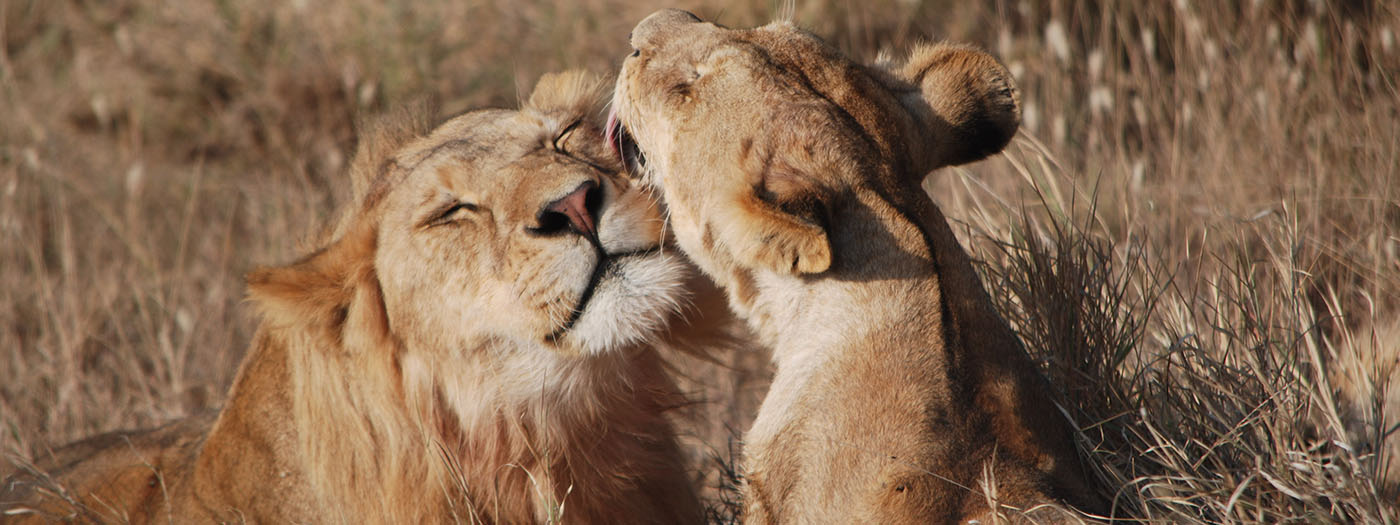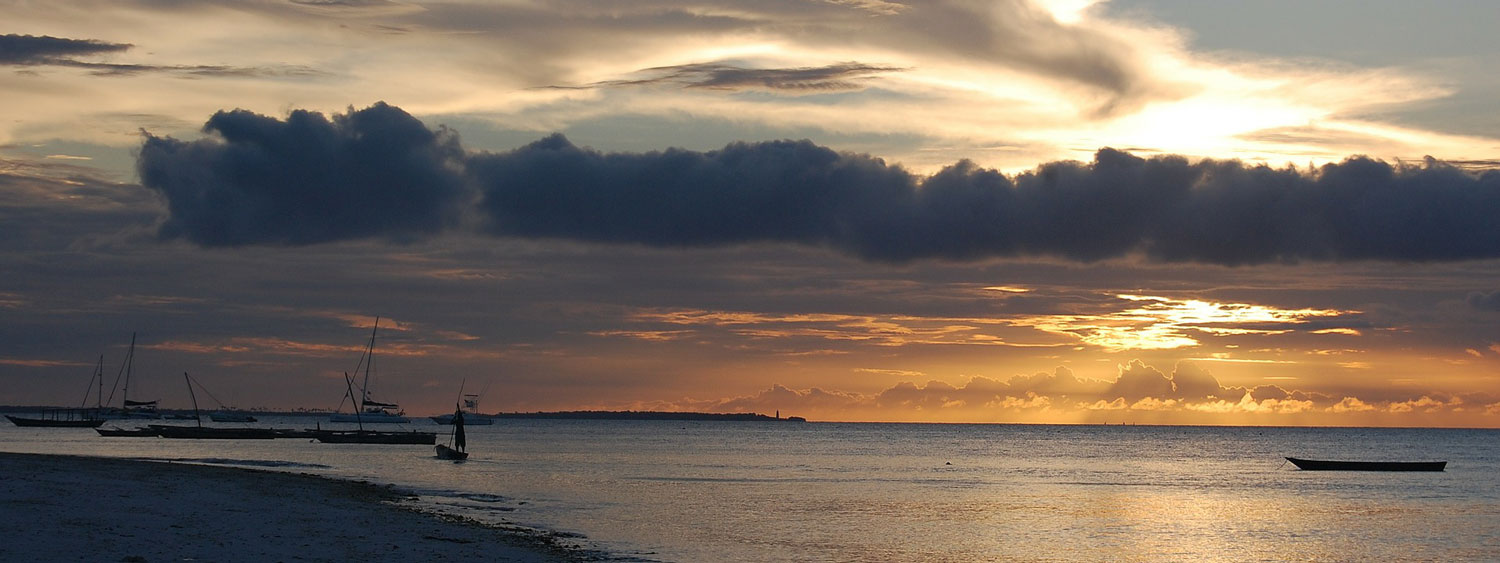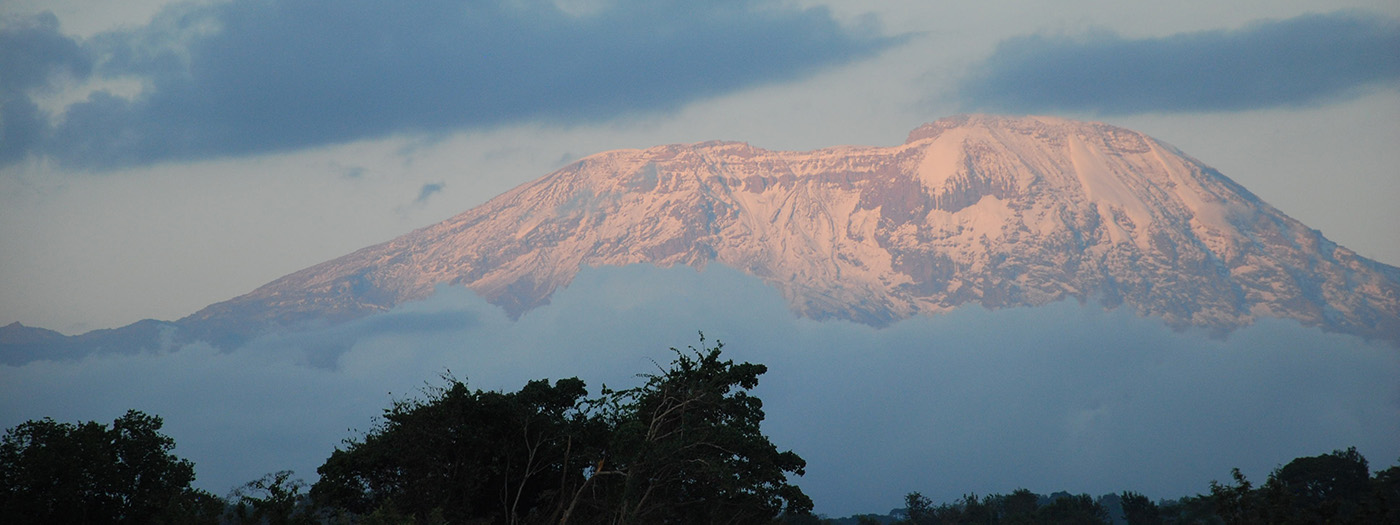Mount Kilimanjaro is the highest solitary peak in the world and the highest mountain all over Africa, that’s why it’s called "The Roof of Africa". Climbing to the summit does not require technical skills, Kiimanjaro trekking is possible for all passionate trekkers.
Kilimanjaro: The Roof of Africa
This imposing mountain is an extinct volcano made up of three craters: Shira to the West (3962 m.), Mawenzi to the East (5149 m.) and Kibo in the center, while Uhuru Peak (5895 m.) is the highest peak.
A tundra "Saddle" stretches for 3600 meters between Kibo and Mawenzi, while a glacier covers the top of the mountain. This suggestive “White Blanket”, which soars above the clouds, can be spotted arriving by plane or even from Arusha on clear days.
Where is Mount Kilimanjaro located?
Kilimanjaro is located in Tanzania within Kilimanjaro National Park. The mountain is famous for being the tallest mountain all over Africa and the highest lonely peak in the world.
- Geographical location: in the North of Tanzania, near the city of Moshi
- Size of Kilimanjaro National Park: 756 sq km
- The altitude of Mount Kilimanjaro: 5895 meters
- Distance from Arusha: 120 km
- Distance from Ngorongoro: about 300 km
- Distance from Serengeti: approximately 450 km
- Distance from Tarangire: about 250 km
Kilimanjaro Climate
Climate of Tanzania allows you to experince Kilimanjaro trekking all the year, although, of course, temperatures and rainfall vary depending on the season.
From December to February, the days are longer and temperatures are milder (maximums around 25-30 °C), while from July and October the climate is drier and temperatures are cooler. Even in April and May, when rainfall is more abundant, the Kilimanjaro trekking is still possible.
Kilimanjaro Flora
Trekking through the five ecosystems of Mount Kilimanjaro allows hikers to see truly unique flowers and plants. There are flowers, plants and trees that you can't find anywhere else in the world. Some of the most surprising, weird and common plants are:
- Everlasting Flowers (perennial flowers)
- Protea Kilimandscharica
- Stoebe Kilimandscharica
- Red Hot Poker
- Lobelia Deckenii
- Hebenstretia Dentata
- Fireball Lily
- Dendrosenecio Kilimanjari
- Tussock
- Old Man's Beard
Kilimanjaro Wildlife
Mount Kilimanjaro National Park is a vast ecosystem covering an area of 1,688 square kilometers. In 1921 the area became a reserve and then a national park in 1973 as well as a UNESCO World Heritage Site in 1987. This protection has allowed the wildlife in Kilimanjaro area to overtake the human invasion of the habitat.
As trekkers will surely notice on their way to the summit, Kilimanjaro encompasses a wide variety of ecological zones: bush land, rainforest, moorland, alpine and arctic deserts. The resources to sustain life - available plants, insects and water sources - decrease as altitude increases. As a result, the wildlife in each zone decreases as you get closer to the summit.
The forest area is teeming with wildlife. 154 mammal species have been sighted on the mountain, including 7 primates and hundreds of bird species. There have been some rare sightings of large mammals such as elephants, giraffes, buffaloes and smaller mammals such as porcupines and honey badgers. However, most of the time, these animals stay away from humans and hide in the dense, lush forest.
Kilimanjaro National Park
Kilimanjaro National Park is one of the most famous parks in Tanzania and is home to many African mammals species including elephants, buffaloes and leopards.
Game drives are possible in the areas of "West Kilimanjaro" even if in the last years the anthropogenic pressure has made sightings of wild animals more difficult. In the forest, there are many primates such as baboons, colobus and bushbaby, and many birds species.
The park was first declared a natural reserve in 1910, then a forest reserve in 1921, a national park in 1973 and finally in 1987 a UNESCO World Heritage Site.
Kilimanjaro activities
Kilimanjaro is the perfect destination for all passionate trekkers as its ascension relatively easy. In addition, the presence of different paths allows you to live an ever-new experience.
Even if trekking is not your passion, during your safari in Tanzania we advise you plan a visit at the foot of Kilimanjaro: the view will fully repay you for the time spent to reach there. We can organize a short trekking on Kilimanjaro or a more varied day visiting waterfalls, plantations and discovery Chagga culture and traditions. Chagga is the native tribe in Kilimanjaro area.
Kilimanjaro Trekking
Kilimanjaro is one of the most accessible peaks and is the destination of visitors from all over the world.
All you need for the trekking is mountain poles, suitable clothing and a pinch of determination to reach the summit. Visitors who reach Uruhu Point, the current summit, or Gillman Point on the crest of the crater, will be proud to have climbed the mountain and will take home unforgettable memories. However, there is not only the top of Kilimanjaro, the ascent from the slopes is in itself a wonderful journey through the different climates of the world, from tropical to arctic climate.
Before crossing the park boundary (at 2700 m.), you pass along cultivated slopes, then through a lush mountain forest inhabited by elephants, leopards, buffaloes, small antelopes and various species of monkeys. Higher up we find the marsh area covered with ivy and giant lobelias.
Above 4000 meters, we will encounter a surreal alpine desert with its sparse vegetation of mosses and lichens, which gives way to the winter wonders of ice and snow and the splendor of the "Roof of Africa".
Tips for trekkers
First of all, it is necessary to walk slowly to allow the body to get used to the climatic changes at different altitudes.
Even if the route does not include climbing, it can certainly be challenging. For this reason, especially for the less experienced trekkers, it is recommended to dedicate at least 5 nights to the trekking. In this way, you will not have to endure excessive effort and you will admire the natural wonders around you.
Frequently Asked Questions (FAQ)
We collected the most common questions in a dedicate page and keep this page up to date. You can check our Frequently Asked Questions (FAQ) page for more information.
You can also read the following Kilimanjaro travel guides:
Kilimanjaro Trekking Routes
There are different routes for Kilimanjaro trekking. All the itineraries are really beautiful:
- Marangu route, very popular and well equipped for overnight stays in huts
- Machame route for the more daring trekkers
- Lemosho route, the less known and longest way to the summit
- Rongai route, characterized by a path for the ascent completely different from that for the descent.
Machame Route
Many claim it is the most beautiful Kilimanjaro trekking route. Surely your efforts will be rewarded by a unique landscape that will take your breath away.
This route is also called the "Whiskey route" and is ideal for the more adventurous trekkers. Unlike the Marangu route, where overnight stays are in huts, you will sleep in tents following this route.
Most climbers use 6 days for the trekking, although an additional day for acclimatization can be added. Good acclimatization to the altitude is the key to reach the summit, we recommend take this into consideration.
All of our programs are flexible and can be tailor-made for you.
Below is Machame route daily itinerary:
Marangu Route
Known by many as the “Coca-cola route”, Marangu is by far the best known and most popular route. It is the shortest route that can be done in just 5 days, although it is usually best to use a few more days for acclimatization. Extending the trekking by one day greatly increases the chances of reaching the summit.
The other main difference from the other routes is that you will sleep in huts (shelters) and you can buy drinks, beer etc. at the camps.
For the 5-day trekking, the acclimatization day at Horombo hut (third day) is skipped. Below is an itinerary for climbing in 6 days:
Northern Circuit
It is one of the most beautiful and least known routes for climbing Kilimanjaro. Your efforts will be compensated with a fantastic view, different from the other routes.
It starts West of the other gates and crossing through Lemosho Glades you may see some animals in this area like buffaloes, elephants and other big mammals. For this reason, the first day you may be accompanied by an armed ranger.
Lemosho Route
Less known and less traveled by hikers, but no less enchanting, it is the longest route compared to the others. The evocative panorama will make you forget the great effort to get to the top.
It starts West of the other routes and crossing through Lemosho Glades you could meet buffaloes, elephants and other wild mammals). Usually an armed ranger walks with you the first day. Starting the fourth day, we will join Machame route until the summit. Unlike the Marangu route, where the overnight stays are in huts, you will sleep in tents. The following is the most popular Lemosho route trekking program:
Rongai Route
Rongai route is the least traveled route for Kilimanjaro trekking. It starts from the Northern side and requires a fairly long transfer. On the other hand, it offers fantastic views and the possibility of being the only hikers or almost. The trekking last 6 days walking, although we can reduce it to 5 days by removing the acclimatization day.
All of our programs are flexible and can be modified to suit the needs of individual groups. Below is the Rongai Route trekking program in 6 days:
Kilimanjaro Trekking Best Period
Due to the proximity of Mount Kilimanjaro to the equator, there are no big differences between summer and winter, the biggest differences depend on the dry and wet seasons.
The best time to climb Kilimanjaro is in the hottest and driest months, i.e. January, February, and from July to October. In case of mud, snow, ice and cold, the trekking becomes physically and psychologically more challenging, so the chances to reach the summit increase significantly with good weather conditions.
The dry seasons range from early December to early March and then from late June to late October. These are the best periods for Kilimanjaro trekking for weather conditions but they are also the high season months.
When a full moon lights up Kilimanjaro summit and the glacier, the trekking becomes easier due to the better visibility especially during the ascent to the summit. For this reason, some climbers prefer the trekking when there is a full moon.
The least suitable period for Kilimanjaro trekking is the heavy rains season during April and May. Anyway we have to take into considerations the rains are unpredictable and can come early or extend beyond their typical time frames. It is possible to have mostly dry weather conditions during the rainy season, just as it is possible to have heavy rains during the dry season.
Safari and Kilimanjaro
Trekking enthusiasts who come to Tanzania for Kilimanjaro trekking can continue their adventure with a safari. Tanzania is famous for being the best safari destination in Africa and it is worth extending the holiday visiting Northern Tanzania National Parks like Serengeti. A 3-4 night safari is enough to spot the famous African wild animals including lions and other predators.
The following safari program is one of the most common safari after Kilimanjaro trekking:




